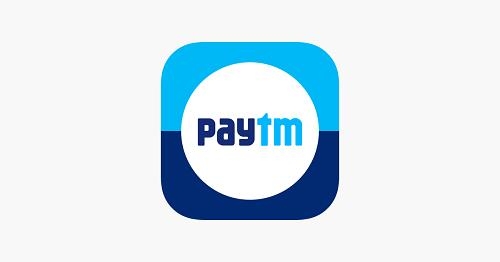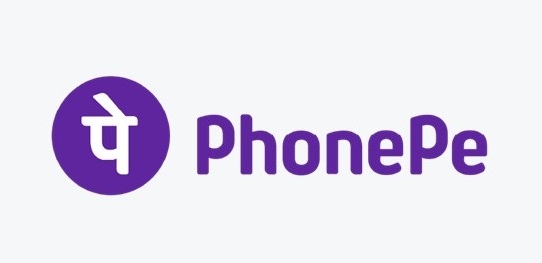India's digital payment landscape has transformed dramatically in recent years, with UPI (Unified Payments Interface) becoming the backbone of the country's fintech revolution. Among the numerous payment apps available, three platforms stand out as market leaders: Paytm, PhonePe, and Google Pay. Each offers unique features, benefits, and potential drawbacks that may influence your choice. Let's examine these three popular payment solutions to help you decide which one best suits your needs.The Rise of UPI Payments in IndiaBefore diving into the comparison, it's worth acknowledging how UPI has revolutionized digital payments in India. This instant real-time payment system, developed by the National Payments Corporation of India (NPCI), enables inter-bank transactions through mobile devices with remarkable ease. The three apps we're comparing all leverage UPI technology while adding their own unique features and ecosystems.Paytm: The PioneerAs one of India's earliest digital payment platforms, Paytm has evolved from a simple mobile recharge service to a comprehensive financial ecosystem.Strengths:Diverse Ecosystem: Paytm offers everything from payments to shopping, entertainment bookings, and investment options all within one app.Payment Options: Supports UPI, wallet, credit/debit cards, and even Paytm Postpaid for buy-now-pay-later convenience.Financial Services: Access to banking, loans, insurance, and investment products through Paytm Money.Merchant Solutions: Extensive merchant network and POS solutions for businesses of all sizes.Limitations:App Complexity: The interface can feel cluttered with numerous features and promotional content.Customer Service: User feedback sometimes highlights challenges with customer support response times.PhonePe: The Market LeaderPhonePe has rapidly grown to become India's most-used UPI app, processing billions of transactions monthly.Strengths:User Experience: Clean, intuitive interface focusing on core payment functions.Reliability: Generally stable performance even during high-volume transaction periods.Bill Payments: Comprehensive bill payment options covering utilities, education fees, and more.Insurance and Investment: Growing financial services portfolio including mutual funds and insurance.Merchant Acceptance: Wide merchant adoption across physical and online stores.Limitations:Limited International Features: Fewer options for international payments compared to competitors.Rewards System: Less aggressive with cashback offers compared to its early days.Google Pay: The Tech Giant's OfferingGoogle's entry into India's payment ecosystem brought its technology expertise and global experience to the market.Strengths:Speed and Simplicity: Streamlined interface with fast transaction processing.Security Features: Advanced security protocols leveraging Google's technology expertise.Rewards Program: Regular scratch cards and cashback opportunities.Business Features: Strong tools for merchants including spot codes and business profiles.Integration: Seamless connections with other Google services.Limitations:Limited Financial Services: Fewer banking and investment options compared to Paytm and PhonePe.Data Privacy Concerns: Some users express reservations about data handling by international tech companies.Key Comparison FactorsTransaction Success RatesAll three platforms maintain high success rates, but recent data suggests PhonePe slightly edges out the competition in transaction reliability during peak loads.User Interface and ExperienceSimplest Interface: Google PayMost Feature-Rich: PaytmBest Balance: PhonePeBeyond UPI: Additional ServicesPaytm: Offers the most comprehensive ecosystem with shopping, entertainment, banking, and investments.PhonePe: Focuses on payments and financial services with a growing emphasis on insurance and investments.Google Pay: Primarily payment-focused with limited but growing additional services.Security FeaturesAll three apps implement multi-factor authentication, but approach security differently:Paytm: PIN, pattern, password, and biometric optionsPhonePe: PIN and biometric authenticationGoogle Pay: Leverages Google's security infrastructure with advanced fraud detectionWho Should Use Which App?Choose Paytm if:You want a comprehensive financial ecosystem with everything in one placeYou frequently use online shopping, entertainment bookings, and diverse payment optionsYou're interested in accessing alternative financial services like Paytm PostpaidChoose PhonePe if:You prioritize reliability and straightforward user experienceYou make frequent bill payments and utility transactionsYou want a balance between payment functionality and additional financial servicesChoose Google Pay if:You value simplicity and transaction speed above allYou're already integrated into the Google ecosystemYou appreciate regular rewards through cashback programsThe Multi-App StrategyMany Indian users actually maintain multiple payment apps on their phones, using different platforms for different purposes. This approach allows you to:Take advantage of app-specific discounts and offersHave backup options if one service experiences downtimeUtilize the unique strengths of each platformLooking ForwardAs India's digital payment landscape continues to evolve, we're seeing increasing convergence in features across these platforms. All three are expanding their financial service offerings while maintaining their core payment functionality.Upcoming trends to watch include:Enhanced integration with credit products and BNPL servicesGreater focus on investment and wealth management toolsImproved international payment capabilitiesConclusionThere's no definitive "best" payment app for everyone. Your ideal choice depends on your specific needs, usage patterns, and preferences. Paytm offers the most comprehensive ecosystem, PhonePe delivers reliable core payment functionality with growing financial services, and Google Pay provides speed and simplicity with strong security features.For most users, experimenting with all three apps initially and then settling on one or two primary platforms based on personal experience represents the most practical approach to navigating India's dynamic digital payment landscape.Stay tuned with Elephants Finance for more news.
India's digital payment landscape has transformed dramatically in recent years, with UPI (Unified Payments Interface) becoming the backbone of the country's fintech revolution. Among the numerous payment apps available, three platforms stand out as market leaders: Paytm, PhonePe, and Google Pay. Each offers unique features, benefits, and potential drawbacks that may influence your choice. Let's examine these three popular payment solutions to help you decide which one best suits your needs.
The Rise of UPI Payments in India
Before diving into the comparison, it's worth acknowledging how UPI has revolutionized digital payments in India. This instant real-time payment system, developed by the National Payments Corporation of India (NPCI), enables inter-bank transactions through mobile devices with remarkable ease. The three apps we're comparing all leverage UPI technology while adding their own unique features and ecosystems.
Paytm: The Pioneer

As one of India's earliest digital payment platforms, Paytm has evolved from a simple mobile recharge service to a comprehensive financial ecosystem.
Diverse Ecosystem: Paytm offers everything from payments to shopping, entertainment bookings, and investment options all within one app.
Payment Options: Supports UPI, wallet, credit/debit cards, and even Paytm Postpaid for buy-now-pay-later convenience.
Financial Services: Access to banking, loans, insurance, and investment products through Paytm Money.
Merchant Solutions: Extensive merchant network and POS solutions for businesses of all sizes.
App Complexity: The interface can feel cluttered with numerous features and promotional content.
Customer Service: User feedback sometimes highlights challenges with customer support response times.
PhonePe: The Market Leader

PhonePe has rapidly grown to become India's most-used UPI app, processing billions of transactions monthly.
User Experience: Clean, intuitive interface focusing on core payment functions.
Reliability: Generally stable performance even during high-volume transaction periods.
Bill Payments: Comprehensive bill payment options covering utilities, education fees, and more.
Insurance and Investment: Growing financial services portfolio including mutual funds and insurance.
Merchant Acceptance: Wide merchant adoption across physical and online stores.
Limited International Features: Fewer options for international payments compared to competitors.
Rewards System: Less aggressive with cashback offers compared to its early days.
Google Pay: The Tech Giant's Offering

Google's entry into India's payment ecosystem brought its technology expertise and global experience to the market.
Speed and Simplicity: Streamlined interface with fast transaction processing.
Security Features: Advanced security protocols leveraging Google's technology expertise.
Rewards Program: Regular scratch cards and cashback opportunities.
Business Features: Strong tools for merchants including spot codes and business profiles.
Integration: Seamless connections with other Google services.
Limited Financial Services: Fewer banking and investment options compared to Paytm and PhonePe.
Data Privacy Concerns: Some users express reservations about data handling by international tech companies.
Key Comparison Factors
- Transaction Success Rates
All three platforms maintain high success rates, but recent data suggests PhonePe slightly edges out the competition in transaction reliability during peak loads.
- User Interface and Experience
Simplest Interface: Google Pay
Most Feature-Rich: Paytm
Best Balance: PhonePe
- Beyond UPI: Additional Services
Paytm: Offers the most comprehensive ecosystem with shopping, entertainment, banking, and investments.
PhonePe: Focuses on payments and financial services with a growing emphasis on insurance and investments.
Google Pay: Primarily payment-focused with limited but growing additional services.
All three apps implement multi-factor authentication, but approach security differently:
Paytm: PIN, pattern, password, and biometric options
PhonePe: PIN and biometric authentication
Google Pay: Leverages Google's security infrastructure with advanced fraud detection
Who Should Use Which App?
Choose Paytm if:
You want a comprehensive financial ecosystem with everything in one place
You frequently use online shopping, entertainment bookings, and diverse payment options
You're interested in accessing alternative financial services like Paytm Postpaid
Choose PhonePe if:
You prioritize reliability and straightforward user experience
You make frequent bill payments and utility transactions
You want a balance between payment functionality and additional financial services
Choose Google Pay if:
You value simplicity and transaction speed above all
You're already integrated into the Google ecosystem
You appreciate regular rewards through cashback programs
The Multi-App Strategy
Many Indian users actually maintain multiple payment apps on their phones, using different platforms for different purposes. This approach allows you to:
Take advantage of app-specific discounts and offers
Have backup options if one service experiences downtime
Utilize the unique strengths of each platform
Looking Forward
As India's digital payment landscape continues to evolve, we're seeing increasing convergence in features across these platforms. All three are expanding their financial service offerings while maintaining their core payment functionality.
Upcoming trends to watch include:
Enhanced integration with credit products and BNPL services
Greater focus on investment and wealth management tools
Improved international payment capabilities
Conclusion
There's no definitive "best" payment app for everyone. Your ideal choice depends on your specific needs, usage patterns, and preferences. Paytm offers the most comprehensive ecosystem, PhonePe delivers reliable core payment functionality with growing financial services, and Google Pay provides speed and simplicity with strong security features.
For most users, experimenting with all three apps initially and then settling on one or two primary platforms based on personal experience represents the most practical approach to navigating India's dynamic digital payment landscape.
Stay tuned with Elephants Finance for more news.


Comment 0